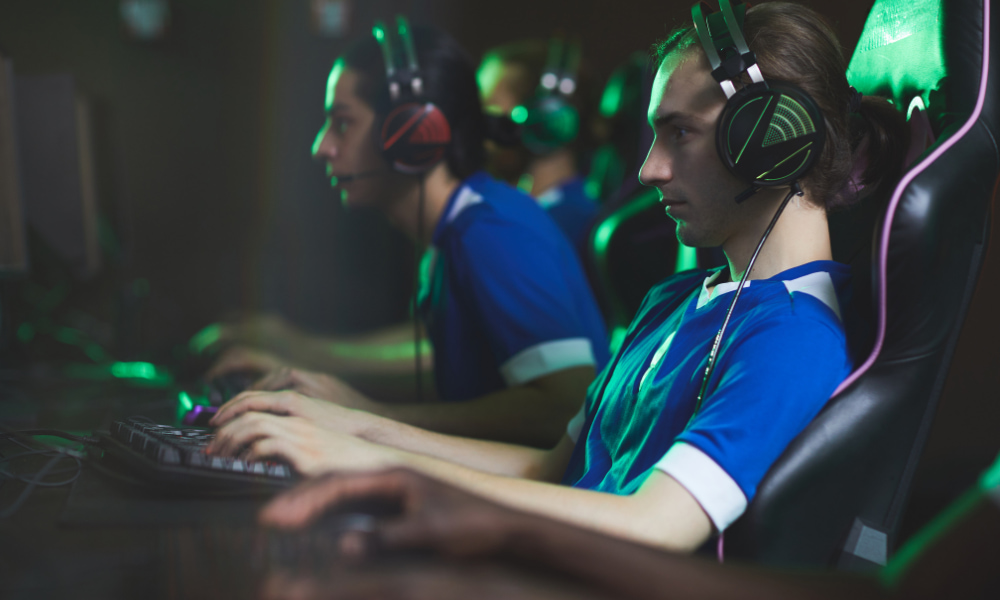Tips
Tips for Choosing the Best Open-World Game for You
Choosing the best open world game for mobile? This guide dives deep into game features, accessibility, replay value, and community feedback to help you find worlds that truly fit your style and schedule.
Advertisement

Many games offer a sense of freedom that goes far beyond the main quest, letting you chart your own path. This freedom defines the thrill of open world games, inviting players to explore, experiment, and dive into a living virtual universe all their own.
Deciding which open world game best matches your style can change every play session into a rewarding journey. Dive in for concrete tips and practical examples to help you confidently pick your next immersive mobile gaming escape.
Start by Mapping Your Playstyle to the Game’s Core Loop
The most satisfying open world games fit your playstyle like a glove. Start by considering how you like to approach games daily and what really excites you about playing on your mobile device.
For many, the core loop—whether it’s exploration, combat, crafting, or narrative discovery—makes or breaks an experience. Identifying this up front helps you focus your search on games you’ll actually finish.
Distinguishing Between Exploration and Task-Driven Gameplay
Suppose you thrive on roaming, stumbling across hidden corners, and soaking in virtual vistas. You’ll feel right at home in open world games that prioritize non-linear exploration and subtle environmental storytelling.
On the other hand, if checklists, goals, and structure drive your satisfaction, look for games with quest-tracking systems, clear objectives, and a progression tracker. These features keep you motivated from session to session.
Try saying, “I want to explore and get lost for hours,” or “I want tight missions and a sense of completion.” Jot your answer down as a quick self-check before browsing options.
Tuning Game Pacing to Match Your Mood and Schedule
Maybe you’ve got twenty minutes before class or an hour’s subway commute. The right open world game should offer meaningful progress no matter how long you play.
For mobile gaming, open world titles with quick save systems, flexible quest increments, and lots of in-world activities work best. You can dip in for a quick session or linger for a marathon without losing track of your goals.
If a game expects long play windows or punishes short sessions, skip it for something designed with busy, on-the-go players in mind. Testing out a free demo can help nail the fit.
| Game Name | Core Loop | Best For | What To Look For Next |
|---|---|---|---|
| Voxel Explorer | Exploration, Crafting | Creative, Builders | Seek multiplayer and mod support |
| Bounty Run | Combat, Missions | Action Seekers | Check for responsive controls |
| Story Streets | Narrative Choices | Lore Lovers | Browse in-game story archives |
| Wild Wheels | Racing, Challenges | Competitive Players | Test the online leaderboard |
| Urban Replicator | Simulation, Crafting | Strategy Fans | Look for city customization features |
Analyze Game Worlds for Diversity, Accessibility, and Replay Value
Experienced players check world density and diversity before committing. Open world games win loyalty with environments that keep revealing small details, open up new routes, and give you real reasons to return.
The best new releases make room for different accessibility needs, so look for control remapping, UI size adjustments, and voice-overs. Ensuring replayability means reviewing how the world evolves after your first run.
Checklist: Evaluating World Diversity and Replay Value
Go room-by-room: note if biomes, neighborhoods, or regions look and play differently. If sidequests, collectibles, or random events push you to revisit old locations, chances are high you’ll enjoy deeper long-term engagement.
- Walk through several zones and compare: Do they offer unique enemies, activities, or visuals? This keeps exploration in open world games fresh with every session.
- Review if dynamic weather or events alter gameplay meaningfully. Changes should feel impactful, not cosmetic, to make returning worthwhile.
- Check if choices you make have visible impact. Branching paths or alternate quest lines increase replay value and make your story unique.
- Try a few different quest types: side quests, main missions, time-limited events. Variety here allows for both linear and wandering playstyles.
- Find out if multiplayer, daily challenges, or seasonal events keep the world evolving. The more reasons you have to log back in, the better.
Write down a short list of features you notice—it’s an easy way to compare your top picks and weed out shallow worlds quickly.
Checklist: Prioritizing Accessibility for Inclusive Play
Multiple control schemes and clear text are essential in open world games, especially for mobile. Adjust brightness, subtitles, and colorblind modes for comfort and easier comprehension.
- Test the tutorial: if it confuses you or skips basic features, keep searching for something more beginner-friendly. Clarity promotes a smoother experience for all players.
- Explore menu accessibility: customizable triggers, joystick or touch screen options, and remappable buttons support all play styles without frustration.
- Read reviews on voiceover or audio cues for important actions. Strong feedback helps visually impaired players thrive.
- Adjust font size and UI elements—if important info’s too tiny, the immersion breaks. Prioritize games with adjustable text for smoother reading.
- Experiment with assist modes or difficulty sliders so every session meets your ability and energy, rather than the other way around.
The more features a game offers out-of-the-box, the more likely you’ll feel at home, regardless of your preferred setup.
Identify Genre Blends That Match Your Daily Gaming Mood
Many open world games blend action, strategy, or social features. Matching your mood to a game’s genre blend gets you off to the best start for each play session.
Pacing: When You Have Ten Minutes Versus an Hour
Open a fast-paced action game with timed missions when you want adrenaline on your coffee break. Reach for a narrative-driven world when you’re ready to lose yourself for longer stretches.
If you normally play while multitasking, games with persistent, idle progress let you manage upgrades as you go. For intense focus, those with episodic content or chapters feel more satisfying in longer bursts.
Try using a recurring reminder: “Ten-minute games if I’m rushed, long campaigns if I’m winding down.” This little rule keeps your library versatile and tailored.
Social Play: Competing, Collaborating, or Making Memories
Choose open world games with active chat, trading, or friend features when you’re looking to socialize. It’s a great way to make gaming a shared experience, even if you’re apart.
If you prefer your adventures solo, check if multiplayer is optional, and whether progression or world-building is player-driven rather than forced. Many games let you toggle privacy for less interruption.
Decide ahead of time how social you’re feeling — join a friend for an event, or mute chat for a quiet evening. Let mood guide your game choice each day.
Prioritize Progression Systems That Motivate Without Overwhelming
Your drive to return tomorrow depends heavily on how a game rewards you today. The best open world games show progress with each session, whether with loot, skills, or story beats.
Keeping Rewards Predictable and Meaningful
It’s smart to avoid games where random loot drops are the only method of advancement—a steady stream of clear, achievable goals fosters satisfaction and helps avoid burnout.
Some games offer badge-checklists, skill-tree unlocks, or equipment upgrades tied to exploration milestones. Track these. Write down which progression system feels best after a few hours, so you can benchmark your future picks.
When you notice your momentum dip, check if grind-heavy progression is the culprit, and look for options with more consistent feedback and flexible achievement paths.
Examples of Gentle versus Steep Learning Curves
Entry-level open world games layer in new mechanics bit by bit. For example, a game might introduce one quest type or tool every hour, easing you in.
By contrast, some games dump a dozen systems on you in the opening hour, expecting you to keep up. If you feel lost early on, don’t hesitate to look for gentler options.
Compare your first and fifth play session to see if mechanics feel intuitive and rewarding, and adjust your future picks based on this real experience.
Scan for Visual and Audio Cues That Support Immersive Play
Strong visual and audio design in open world games does more than look pretty. It communicates danger, rewards, and navigational cues, directly improving how you play on mobile devices.
Expect clean, readable UI and audio signals that don’t overwhelm or distract. Take mental notes after ten minutes to see if the world feels immersive or cluttered.
Audio Alerts and Music Cues in Busy Worlds
Step into a dense forest and hear distant animal cries or wind whipping past. These effects aren’t just background—they warn of danger or signal important in-game events, guiding your choices.
Games with layered soundscapes let players instantly recognize when a quest marker is close, or a rare enemy enters the area, keeping exploration fast and reactive.
Make a checklist: if you miss audio clues, try toggling different headphone settings, or try another game with more distinct cues for safer, more efficient progress.
Evaluate Monetization, Updates, and Community Feedback Before Committing
Great open world games aren’t made once and left alone—they’re updated, expanded, and kept healthy by a strong community. Pay attention to patch frequency and monetization structures before spending time or money.
If in-game purchases feel mandatory for core progression, try a different title. Look for games known for frequent free updates and responsive developers who listen to feedback.
- Check most recent patch notes: Frequent updates mean bugs get fixed fast, keeping worlds stable and fun for daily play.
- Search review forums for developer replies: The best games feature active engagement and transparency when players raise concerns or suggest features.
- Compare “battle pass” or microtransaction features. If upgrades are cosmetic, they likely won’t impact your play. Gameplay items behind a paywall can feel restrictive.
- Read changelogs for new story content, events, or map expansions. A growing world extends your playtime and keeps boredom at bay.
- Peek into the in-game chat or social media pages. Are players welcoming and helpful, or do you see lots of unresolved complaints?
Confidence in Picking Your Next Open World Adventure
Every step above sets you up to choose a world that fits your schedule, your social circles, and your crave for discovery. You’ve learned how to match playstyle, access features, and spot worthy progression in open world games.
The right open world game keeps you coming back not just for the map, but for the tailored journey. By focusing on diversity, accessibility, and responsive communities, your mobile adventures remain fresh and inspiring.
The next game you pick carries your story. Treat the selection process as its own quest, using these tips, and enjoy every step—whether you wander, race, or build. Now, explore boldly and make that world your own.

Virtual Reality Sports Games
Experience the thrill of VR sports games with tips on maximizing immersion, improving performance, and enjoying fitness benefits from home.
Trending Topics

Virtual Reality Games for Sports Enthusiasts
Discover the top virtual reality sports games for active, immersive experiences that challenge your reflexes and skills.
Keep Reading
How to Avoid Bugs and Errors in Popular Mobile Games
Master the game by minimizing bugs! Use device routines, clear connections, and join communities for smooth, glitch-free gaming!
Keep Reading
The 5 Biggest eSports Tournaments You Need to Know
eSports tournaments like The International and Fortnite World Cup define the scene with huge prizes, global fans, and epic gameplay.
Keep ReadingYou may also like

The Role of Streamers in Popularizing eSports Worldwide
eSports streamers revolutionize gaming by teaching live, hosting global challenges, and inspiring fans to join the competitive scene.
Keep Reading
The Importance of Mental Training in eSports Performance
Mental training eSports boosts focus, stress management, and team communication, helping mobile gamers improve consistency and performance.
Keep Reading
How to Join eSports Tournaments: A Step-by-Step Guide
Entering eSports tournaments means preparation, strategic practice, and staying consistent—track progress and refine your skills for success.
Keep Reading